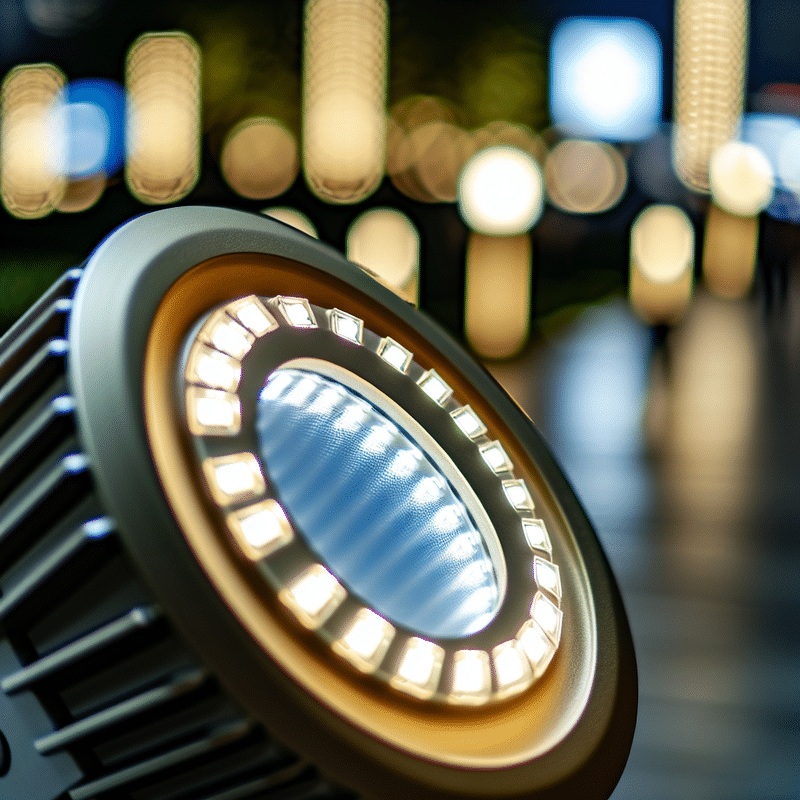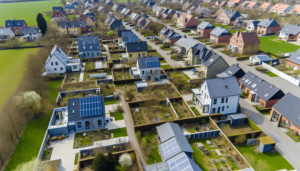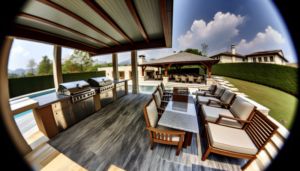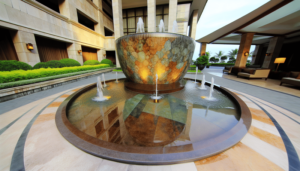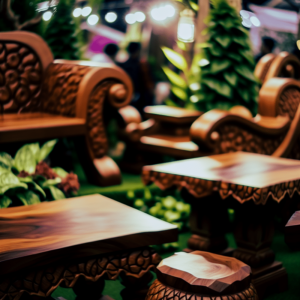Illuminating Your Outdoor Space: A Guide to Modern Outdoor Lighting
Introduction
Modern outdoor lighting has become an essential element in enhancing the beauty, functionality, and security of our outdoor spaces. As homeowners continue to invest in their outdoor living areas, the demand for innovative and efficient lighting solutions has grown significantly. In this comprehensive guide, we will explore the world of modern outdoor lighting, discussing the latest trends, benefits, and considerations to help you make informed decisions when illuminating your outdoor oasis.
Understanding Modern Outdoor Lighting
Modern outdoor lighting refers to the use of contemporary lighting fixtures and technologies to illuminate exterior spaces. Unlike traditional outdoor lighting, which often relies on incandescent bulbs and limited design options, modern outdoor lighting embraces energy-efficient technologies, such as LED and solar-powered lights, and offers a wide range of styles and functionalities to suit various preferences and needs.
The importance of outdoor lighting extends beyond mere aesthetics. Well-designed outdoor lighting can enhance the safety and security of your property, increase the usability of outdoor spaces after dark, and even contribute to the overall value of your home. By strategically placing lights around your property, you can create a welcoming ambiance, highlight architectural features, and define distinct areas for relaxation and entertainment.
Top Trends in Modern Outdoor Lighting
The world of modern outdoor lighting is constantly evolving, with new designs and technologies emerging to meet the changing needs and preferences of homeowners. Some of the top trends in modern outdoor lighting include:
- LED Technology: LED lights have revolutionized the outdoor lighting industry, offering energy efficiency, longevity, and versatility. LED bulbs consume less energy compared to traditional incandescent bulbs, resulting in lower electricity bills and a reduced environmental impact.
- Smart Lights: With the rise of home automation, smart outdoor lighting has gained popularity. These lights can be controlled remotely via smartphones or voice assistants, allowing you to adjust brightness, color, and scheduling from the comfort of your home or even while away.
- Solar-Powered Lights: Solar-powered outdoor lights have become increasingly popular due to their eco-friendliness and convenience. These lights harness the power of the sun during the day and automatically illuminate your outdoor space at night, without the need for wiring or electricity.
- Minimalist Designs: Modern outdoor lighting often embraces minimalist and sleek designs, seamlessly blending with contemporary architectural styles. Clean lines, geometric shapes, and neutral colors are prevalent in modern lighting fixtures, creating a sophisticated and uncluttered look.
The Role of Modern Outdoor Lighting in Energy Conservation
One of the significant advantages of modern outdoor lighting is its contribution to energy conservation. Energy-efficient light fixtures, such as LED and solar-powered lights, consume significantly less energy compared to traditional incandescent bulbs. LED lights, for example, can use up to 90% less energy and last up to 25 times longer than incandescent bulbs. This not only translates to lower electricity bills but also reduces the environmental impact of outdoor lighting.
Moreover, modern outdoor lighting often incorporates features like motion sensors and timers, which further enhance energy efficiency. Motion sensor lights only activate when movement is detected, reducing unnecessary energy consumption when the area is not in use. Timers allow you to schedule your lights to turn on and off at specific times, ensuring that your outdoor space is illuminated only when needed.
Styles of Modern Outdoor Lighting
Modern outdoor lighting offers a wide range of styles to suit various architectural designs and personal preferences. Some popular styles include:
- Wall Lights: Wall-mounted lights are versatile and can be used to illuminate entryways, pathways, or accent architectural features. They come in various designs, from sleek and minimalist to more ornate and decorative.
- Landscape Lights: Landscape lighting is used to highlight gardens, trees, and other outdoor features. Spotlights, floodlights, and garden stakes are common types of landscape lights that can create a stunning visual effect and enhance the beauty of your outdoor space.
- Path Lights: Path lights are essential for safety and navigation, illuminating walkways, driveways, and stairs. Modern path lights often feature low-profile designs and can be solar-powered for added convenience.
- String Lights: String lights, also known as festoon or café lights, have gained popularity in recent years. These lights create a warm and inviting ambiance, perfect for outdoor dining areas, patios, or backyard gatherings.
Key Considerations When Choosing Modern Outdoor Lighting
When selecting modern outdoor lighting for your home, there are several key factors to consider:
- Purpose: Determine the primary purpose of your outdoor lighting. Is it for safety, security, ambiance, or a combination of these? Understanding your lighting goals will help you choose the appropriate fixtures and placements.
- Style: Consider the architectural style of your home and choose lighting fixtures that complement or enhance it. Modern outdoor lighting offers a wide range of styles, from minimalist to industrial, ensuring that you can find options that suit your taste.
- Location: Assess the specific areas you want to illuminate and choose fixtures that are suitable for those locations. Consider factors such as exposure to the elements, proximity to water sources, and the desired level of brightness.
- Energy Efficiency: Opt for energy-efficient lighting options, such as LED or solar-powered lights, to reduce your energy consumption and environmental impact. Look for fixtures with high lumens per watt ratios, as they provide more light output for the same amount of energy consumed.
- Durability: Outdoor lighting fixtures are exposed to various weather conditions, so it’s crucial to choose products that are durable and weather-resistant. Look for fixtures made from high-quality materials, such as aluminum or stainless steel, and ensure they have appropriate IP ratings for outdoor use.
- Controllability: Consider whether you want the ability to control your outdoor lighting remotely or automate it based on schedules or sensors. Smart lighting systems and dimmers offer convenient control options and can help you create the desired ambiance.
Top Modern Outdoor Lighting Brands to Consider
When shopping for modern outdoor lighting, it’s essential to choose reputable brands known for their quality, durability, and innovation. Some top brands to consider include:
- Philips Hue: Philips Hue offers a wide range of smart outdoor lighting solutions, including wall lights, spotlights, and pathway lights. Their lights can be controlled via a smartphone app, voice assistants, or smart home systems, offering convenient customization options.
- Kichler Lighting: Kichler Lighting provides a diverse selection of modern outdoor lighting fixtures, known for their craftsmanship and attention to detail. Their collection includes wall sconces, post lights, and landscape lighting, catering to various design preferences.
- Hinkley Lighting: Hinkley Lighting combines modern design with traditional craftsmanship, offering a range of outdoor lighting fixtures that blend style and functionality. Their products are known for their durability and weather resistance, making them suitable for various climates.
- Cree Lighting: Cree Lighting specializes in LED outdoor lighting solutions, offering energy-efficient and long-lasting options for residential and commercial spaces. Their product line includes wall packs, flood lights, and area lights, designed to provide optimal illumination while minimizing energy consumption.
Modern Outdoor Lighting Installation: DIY vs. Hiring a Professional
When it comes to installing modern outdoor lighting, homeowners have the option of taking a DIY approach or hiring a professional. While DIY installation can be a cost-effective solution for simple projects, such as installing solar-powered path lights or string lights, more complex installations may require the expertise of a licensed electrician.
DIY installation offers the satisfaction of completing the project yourself and can save you money on labor costs. However, it’s crucial to have a clear understanding of electrical safety and local building codes before attempting any electrical work. Improper installation can pose safety risks and may void the warranty on your lighting fixtures.
On the other hand, hiring a professional electrician ensures that your outdoor lighting is installed correctly, safely, and in compliance with local regulations. Professional installation may be more expensive upfront, but it can save you time, effort, and potential costly mistakes in the long run. Additionally, a professional can provide valuable insights and recommendations based on your specific needs and landscape.
How to Maintain Modern Outdoor Lighting
To ensure the longevity and optimal performance of your modern outdoor lighting, regular maintenance is essential. Here are some tips for maintaining your outdoor lights:
- Clean the fixtures regularly: Dust, dirt, and debris can accumulate on your outdoor lighting fixtures over time, reducing their brightness and efficiency. Regularly clean your fixtures with a soft cloth or brush to maintain their appearance and performance.
- Check for damage: Periodically inspect your outdoor lighting fixtures for signs of damage, such as cracks, corrosion, or loose connections. Address any issues promptly to prevent further damage and ensure the safety of your lighting system.
- Replace bulbs as needed: While modern LED bulbs have a long lifespan, they will eventually need replacement. Keep an eye out for dimming or flickering lights, as this may indicate that the bulbs are nearing the end of their life. Replace bulbs promptly to maintain optimal illumination.
- Trim vegetation: If you have landscape lighting, ensure that surrounding plants and trees are trimmed regularly to prevent them from obstructing the light or damaging the fixtures. Overgrown vegetation can also create shadowing and reduce the effectiveness of your lighting.
- Protect from extreme weather: In areas with harsh weather conditions, consider using protective covers or shields for your outdoor lighting fixtures. This can help prevent damage from rain, snow, or excessive sun exposure, extending the life of your lights.
| Type of Light | Lifespan (in hours) | Energy Efficiency |
|---|---|---|
| LED | 25,000 – 50,000 | High |
| CFL | 8,000 – 15,000 | Medium |
| Incandescent | 750 – 2,000 | Low |
Conclusion
Modern outdoor lighting has the power to transform your outdoor space, enhancing its beauty, functionality, and security. By understanding the latest trends, benefits, and considerations, you can make informed decisions when selecting and installing outdoor lighting for your home.
Remember to prioritize energy efficiency, durability, and style when choosing your lighting fixtures. Whether you opt for a DIY approach or hire a professional, proper installation and regular maintenance are key to ensuring the longevity and optimal performance of your modern outdoor lighting system.
With the right outdoor lighting, you can create a stunning and inviting atmosphere that extends the usability and enjoyment of your outdoor living areas well into the night. Embrace the power of modern outdoor lighting and illuminate your outdoor space in style.


